How to Promote Your Business Locally: 13 Effective Tactics
As a busy local business owner, you probably have a hundred tasks on your to-do list – and counting. From managing day-to-day operations to building strategies that will future-proof your business, this calling can be an exhausting one.
And you can bet we’re cheering you on!
But with everything you have going on at the same time, it can be easy to neglect your local marketing strategy, intentionally or not.
The truth is, if you can find the time to get your local marketing strategy planned, executed, and automated, you’ll find that you have a lot more time to focus on other levers that will help grow your business.
After all, without knowing how to promote your business locally, your prospective local customers will have a much harder time finding – and buying from – you.
Local businesses are the backbone of a community, and promoting them requires a combination of tried-and-true strategies as well as innovative thinking.
The local community will happily choose your small business when they can relate to your story and values.
That said, local marketing within your community is arguably more nuanced than a franchise marketing brand campaign attempting to reach a much broader audience than yours.
Some large franchises use marketing strategies that may try to give off friend and family vibes (and some successfully do).
But as a local business owner, you have the amazing opportunity – day in and day out – to actually form friend- and family-level relationships with the community you serve.
So, how can I do that?
We’re glad you asked! To get you off on the right foot, we’ve compiled a list to show you how to promote your business locally today! Using these tactics, you can create a local marketing plan that feels natural and produces great results.
13 Ways to promote your business locally starting today
Local business owners today have an endless list of marketing tools that they can pick from to promote their small business locally. You have online marketing channels, offline ones, combinations of the two and many more…
Don’t worry – let’s take a look at 13 of your best options that other business owners have used to find success and consistently deliver high-quality customer service!
1. Google Business Profile (GBP)
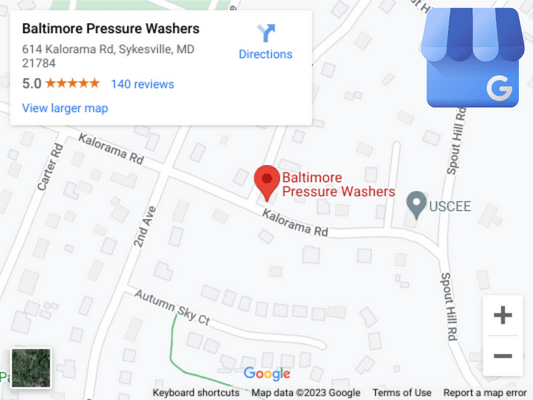
When was the last time you didn’t go to the Google search engine to search for goods or services?!
While there are other search engines, Google holds over 92% of market share, so it makes sense to strengthen your presence and promote your local business on the platform by creating a Google Business Profile (formerly Google My Business).
A Google Business Profile works as a digital storefront for your brand that existing customers and new customers can find in local searches. GBPs and listings are what appear in Google search results when someone types in something like “grocery stores near me.”
To maximize the chances of having your Google business page appear during relevant searches, you’ll need to set up a listing or claim one if it already exists.
Add all the necessary details, such as your contact number, website, business hours, etc. You can also customize the business page profile and add high-quality photos relating to your offerings.
2. Local Search Engine Optimization (SEO)
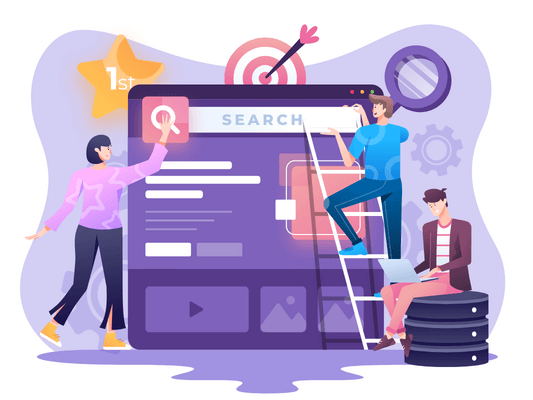
The goal of local search engine optimization is to get your website to rank higher and gain more visibility in the search results when people search for local businesses like yours.
People tend to click on the top one to five results in search engines (assuming the content quality is high and answers the searcher’s questions). So the more your content answers your local customers' questions, the higher the likelihood of you ranking among the top 5 positions.
You can use several optimization tactics as part of your an SEO strategy to improve a page’s search engine rankings and increase your small businesses' industry authority. These include:
-
Creating location-based landing pages
-
Generating high-quality and informative content with relevant keywords
-
Optimizing the website's load time.
-
Getting links to your pages from other people’s and organization’s sites
3. Blogging

Is blogging still relevant in 2023? The answer is yes.
People publish over 70 million new posts on WordPress alone each month. And the reason for this is that blogging, when done correctly, can help increase web traffic, boost brand awareness, and improve your reputation.
But mindlessly posting blogs is not the answer; you need to focus on quality over quantity.
When you create high-quality blogs that answer questions and offer solutions to problems that your prospective users have, you signal to them that you’re a leader in the field.
And while creating awesome content that helps solve people’s problems can take time in the short-term, it will pay dividends in the long-term.
Think of blogging as one of those digital marketing tactics that are a one-and-done, set-and-forget activity that helps you earn existing customers' and new customers' trust and loyalty.
4. Search Engine Marketing (SEM)

While SEO focuses on the organic – or unpaid – side of things, SEM is a type of paid local advertising used to get the webpage of your choice in front of more people at the top (hopefully) of search engine results pages (SERP).
A search engine marketing strategy typically involves identifying branded or industry-relevant keywords with large search volumes and then bidding against other businesses for ad space on the SERPs.
These paid local search results appear above the organic search results, giving them high visibility.
5. Word-of-mouth marketing
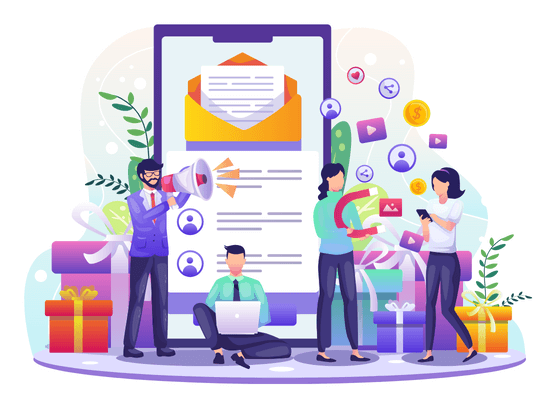
Every single day, we’re bombarded with ads. Many people are becoming "blind" to ads or wait for the first opportunity to skip them.
As global trust in advertising grinds lower, especially in North America, small business owners must tap into what matters most to their target markets and come up with innovative ways to promote their brands.
However, one of the most effective ways to market your product or service as a small business owner is possibly the oldest and simplest. Can you guess it?
Let’s take a few seconds and think of the last time you decided to try or buy something because a colleague, friend, or family member suggested it?
That’s how word-of-mouth marketing works!
It’s a form of social proof that interestingly works even when you don’t know the individual who’s praising a product or service.
Individuals look to the choices that others have made before making a decision themselves. In fact, 88% of global respondents rely on recommendations and reviews from people they know over any other channel.
Word-of-mouth marketing is an integral part of reputation marketing which you can use to build trust with local customers as you educate them on why they should choose your company over your competitors.
It also opens the door to creating a customer referral program, which won't just encourage people to share your business. It'll get you more customers!
6. Social media marketing
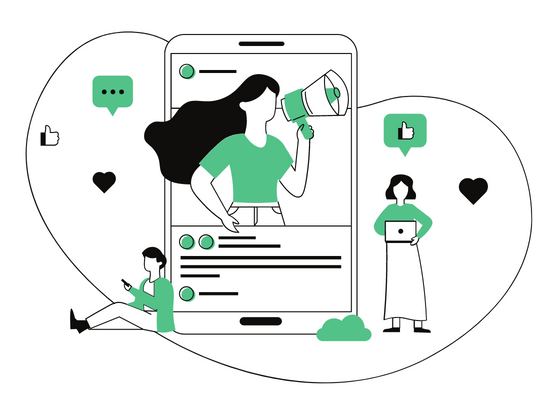
Even if you don’t consider yourself a “marketer” per se, social media platforms can be a local business owner’s best friend.
There are over 4.74 billion users who spend an average of close to 2.5 hours on different social media channels platforms daily.
That’s a big number! Thankfully, while you figure out how to promote your business locally, you only need to worry about your immediate target market – the niche group of people who you’re personally serving.
Prospective customers are already on these platforms, so all you need to do is meet them there!
Spend some time identifying which social media accounts are right for your brand. If creating a Facebook page doesn't make sense for your local business, for example, don't spend your valuable time creating one.
If your target audience is more visual, you might want to focus more on social media platforms like Instagram or TikTok instead of Facebook or Twitter.
See what other local businesses have done for inspiration!
No matter which platform(s) you choose, make sure your content is authentic. Social media allows you to engage and connect with your local audience, and you want to use it to build lasting relationships with them.
As a best practice, use a mix of organic growth strategies like using branded hashtags and responding to comments or direct messages (DMs).
If you’ve got room in your budget, you can even explore paid local advertising on social media platforms like Facebook or Instagram.
7. Local listings, local search, and local business directories

Who doesn't love a free listing? It's free online advertising!
Listing in online directories can go a long way in boosting your reputation and revenue.
By creating structured local listings on online and offline platforms like Yellow Pages and Facebook, you can help potential customers find your small business and any relevant information they may need.
In a local directory, you’ll be able to specify details such as:
-
Business name
-
Physical business address
-
Contact details
-
Business hours
-
Description of goods or services provided
-
Certifications and licenses
-
Accepted payment methods
-
Social media handles
-
Images like your logo or business location
Now this doesn't mean you and other small business owners shouldn't list your businesses in offline customer acquisition channels like the local newspaper.
If your audience spends their morning reading local newspapers and that's where you can get more customers, then by all means do what you need to do get your business listed.
8. Email marketing
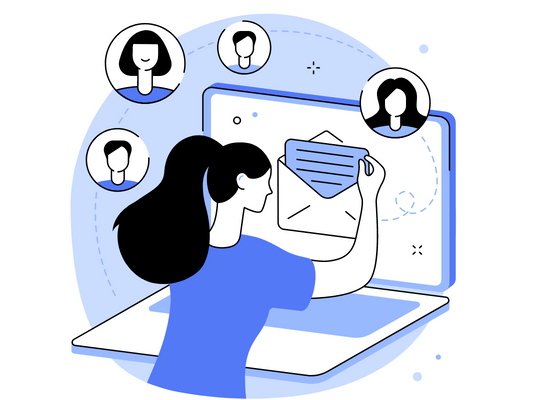
Email marketing involves sending emails to current and prospective customers to increase engagement and, eventually, sales.
On average, email marketing offers a return on investment (ROI) of $36 for each dollar spent, making it more cost-efficient and cost-effective than other customer acquisition channels.
There are four primary types of email marketing campaigns that you can use:
-
Traffic generation campaigns
-
Brand awareness campaigns
-
Lead generation campaigns
-
Revenue generation campaigns
There are many ways to gather email addresses and build a list. You can ask for them at the checkout counter of physical stories or require users to enter the details by signing up for an account or special resource on your website.
You can also offer discounts to new customers for their first purchase or for subscribing to your newsletter.
9. Direct mail

Direct mail campaigns involve sending physical mail like a newsletter, promotional flyer, brand merchandise, and gifts (to name a few) to your current and potential customers.
One of the biggest benefits of direct mail marketing is that it helps your local business stand out from the immense online noise and reach customers in their physical mailbox.
Keep in mind that not everyone enjoys getting flyers. In some households, they go straight in the trash.
But when done right, direct mail campaigns can be a tangible way to connect with your local community and create an emotional connection that they'll recall the next time they're in the market for your offerings.
10. Local influencers

Influencer marketing, peer-to-peer marketing, whatever you want to call it, is an excellent way to connect with your target audience and build trust among them.
You can have the most amazing product or service but, because people trust their peers, the people they know directly or indirectly, having someone they trust share your story and value carries much more weight than coming from another company.
This might be a tough pill to swallow, but it’s true.
An increasing number of brands have started working with individuals who have large followings or strong communities in their respective industries and niches.
And when companies partner with people like local influencers, they can help create hype around their products or services and boost their visibility – online or in store.
In fact, more than 75% of brand marketers invest in influencer marketing, with 68% planning to further increase their spending.
Remember: it’s important to work with influencers who are relevant to your business and who have established credibility in your field. Otherwise, your local marketing tactic will miss the mark and potentially harm your company’s reputation.
For example, if you sell healthy, artisanal smoothies, it can be a good idea to partner with a fitness influencer from your area who promotes physical well-being.
And if that influencer has great relationships with a local group of fitness enthusiasts, you can explore a referral program that will benefit you both!
11. Business cards (and QR codes)

There’s still something awesome about a well-designed business card! It’s like a badge of honor for some people and rightly so – starting and running your own local business is no easy feat.
Business cards can play a key role in making a good first impression. From your name to your role and your logo to your brand colors, they help you appear professional and help people stay in touch with you.
Your business card is a physical representation of your business, but you can also put a Quick Response (QR) code on it that, when scanned, will bring people to the digital representation of your company.
This QR code version of your business card can lead people to your website, social media profile of your choice, or a digital copy of your physical card.
And who knows… if you drop one in a restaurant fishbowl, your local business card may just be picked for that free lunch!
12. Support or sponsor local events and organizations
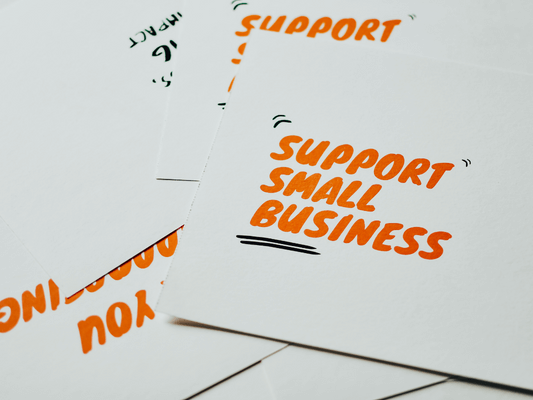
Getting involved with local groups in the community can help establish your brand as a company that cares.
When you’re planning how to promote your business locally, the support or sponsor marketing tactic isn’t necessarily one that will give you instant results.
However, it presents a perfect brand awareness play – you get your brand name out there, educate locals about what you can do to help them, all while supporting other community causes.
And in a world where it seems like so many people are just trying to make quick cash, this approach shows people that you genuinely care about your area and have strong ethics.
Annual festivals, local markets, local charities, and children’s sports teams are just a few awesome examples of things you can start supporting or sponsoring.
For example, if you’re a bakery and lend your support to a local charity, you can distribute branded cookies at the organization’s fundraising community events.
Or if you’re in the home services industry, you can sponsor a sports team and have your logo displayed on their uniforms. Families are always looking for various high-quality local home service companies for home improvements, so planting a seed and building brand awareness while kids play sports they love is a win-win in our books!
13. Gift card and customer loyalty programs
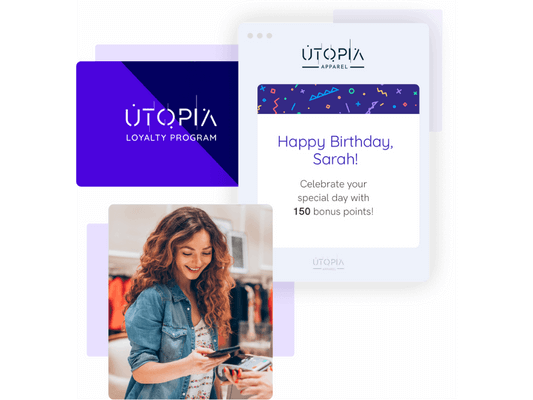
Rewarding customers for giving you their business is an effective way to earn their loyalty, boost revenue, and grow your business.
Plus, if they:
-
Buy a gift card, you can improve sales and increase cash flow!
-
Join a loyalty program, chances are you’re collecting an email address in return which creates opportunities to offer discounts, promote future offers, market new products or services, and increase customer lifetime value thanks to repeat business.
If you haven’t at least thought about starting a gift card program or loyalty program, you could be missing out.
Why?
Because on a macro scale, the global loyalty management market is growing rapidly! It’s worth over $5.5 billion and is expected to surpass $24 billion by the end of 2029.
But on a micro scale, gift card programs helps small businesses like Mission Thrift Store “bring customers back to spend more” and ZIBO! Restaurant-Bar “grow their customer base and their revenues.”
How to promote your business locally using reputation marketing software
Small business owners have multiple ways to promote their business, so it’s essential to narrow down the best methods for your personal business. We hope our guide to marketing your business locally helped you identify the tools you have at your disposal to upgrade your promotional strategy.
If you want to promote your local business and improve your reputation, consider partnering with NiceJob. Our word-of-mouth marketing platform helps you get more reviews, referrals, and sales and sets your business up for success.
Our products include Engage, which allows you to feature your best customer reviews on your website with a free widget, and Convert, which helps you gain at least 10% more website sales (or it's free).





